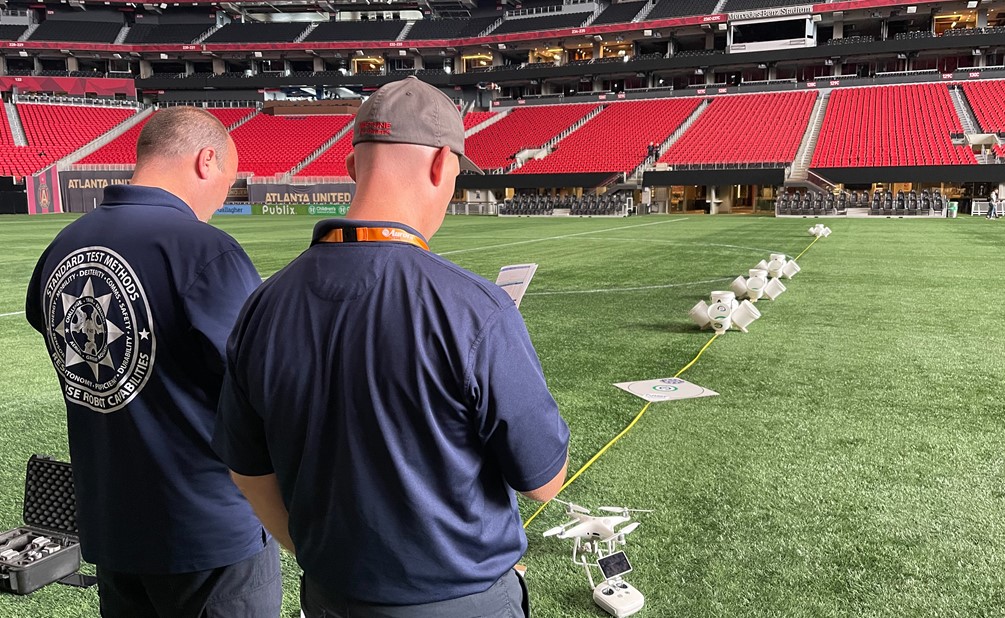The Airborne Public Safety Association (APSA) and the Airborne International Response Team (AIRT), the official home of the DRONERESPONDERS program, have joined forces to support the implementation of the National Institute for Standards and Technology (NIST) Test Methods for Small Unmanned Aircraft Systems (sUAS). The agreement will help create a framework to enhance safety and improve proficiency for remote pilots engaged in public safety drone operations.
Adam Jacoff, project leader of NIST’s Emergency Response Robots Project, told Commercial UAV News, “The first step toward evaluating aircraft capabilities and credentialing remote pilot proficiency is to get everybody onto the same measuring stick. That’s where standard test methods can play a key role.”
To create these standardized methods, APSA and AIRT will work to facilitate validation and dissemination of the NIST test methods for sUAS. This work includes the development of best practices for using the tests to support training with standard measures of remote pilot proficiency for public safety and emergency services organization operating drones for life safety missions.
The standards, Jacoff said, will result from a “collaborative research and development effort with DRONERESPONDERS that will validate the tests with public safety and commercial drone operators across the nation.”
This effort, he stated, “should facilitate mutual aid between responder organizations deployed to large-scale disasters by enabling objective measurement and comparison of particular aircraft capabilities with the associated remote pilot proficiency. The results will help guide deployment decisions and align expectations while improving overall safety within the national airspace system.”
At present, APSA offers basic and advanced-level proctor training courses for public safety agencies looking to adopt the NIST test methods for sUAS, as well as a Basic Proficiency Evaluation for Remote Pilots (BPERP) certification. The DRONERESPONDERS program, in-part through a grant from NIST, will help validate and disseminate the test methods while supporting the courses. They will also maintain a record of public safety agencies and personnel who have successfully completed the training.
Jacoff explained that NIST has developed a variety of sUAS tests that can be constructed from supplies found at most “big box” home improvement stores and assembled on site, as needed. DRONERESPONDERS will help ensure that interested organizations are able to fabricate the test apparatuses and correctly conduct test trials so the resulting performance scores can be used by any organization to select minimum thresholds of proficiency based on their chosen aircraft, airspace and mission complexities, and the environmental conditions in which they intend to deploy.
APSA and AIRT will begin aggregating the average scores for remote pilots on various aircraft within the NIST test methods to enable any organization using similar aircraft to establish their own minimum thresholds of proficiency.
Public safety, industrial, commercial, and even recreational pilots, Jacoff stated, “need to demonstrate essential maneuvers to maintain positive aircraft control while performing whatever payload functionality is necessary to successfully perform the intended tasks.”
Jacoff believes that the NIST test methods for sUAS will provide a scalable, flexible, and reproductible way to train and measure remote pilot proficiency for both professional and recreational pilots. The methods will also reduce risks to ground personnel and manned aircraft operating in the NAS.
“Commercial and Industrial pilots should benefit, too, when insurance companies realize there is now a standardized way to evaluate remote pilot proficiency, which can provide an indication of the relative risk involved,” Jacoff said.




.jpg.small.400x400.jpg)










Comments